Giza, Babylon and Rhodes are all well and pretty, but animals also deserve a list celebrating their best and brightest architects! Here we have selected 7 of nature's best architects; from deep down in the sea to nestled up in the trees, animals also know how to build impressive structures.
The ridged sandcastles of the pufferfish

Image courtesy of Thomas Quine
Puffer fish - or Tetraodontidae, if you want to be pedantic about it - are famous for their ability to blow up to make themselves look bigger, as well as their delicious but dangerous flesh, only prepared by the most skilled and qualified chefs to avoid the deadly poison produced by these creatures.
Since 2012, they are also known for the crop circle-like structures they draw in the sand on the ocean floor. By using a single fin and swimming around for hours, they create these intricate sand castles to attract mates. The more ridges the puffer fish includes in his structure, the more likely it is he will find a mate. This has a biological, practical use, as fertilised eggs are then deposited in the centre of the circle, and protected from oceanic currents by said ridges.
What you may not know: One puffer fish contains enough tetrodotoxin to kill 30 adult men.
Busy bees build beehives
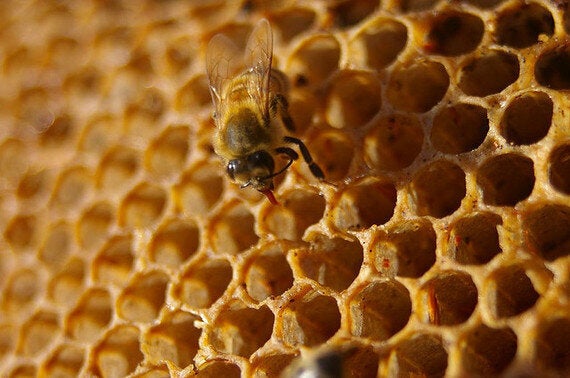
Image courtesy of Peter Shanks
We don't mean the man-made beehives for domesticated honeybees in apiaries, though they are cleverly designed and serve their purpose well; we mean the natural beehives found in nature and originally created by the bees themselves.
Bees usually look for hollowed-out locations to create a nest, such as a hollow tree, caves or rock cavities, where they then create the typical, instantly recognisable, hexagonal honeycomb arrangement. The arrangement of beehives is fairly regular, with honey stored at the top, followed by pollen storage, and finally worker- and drone-breeding cells at the bottom. There can be found the slightly protruding, vaguely peanut-shaped cell for the queen bee at the very bottom
What you may not know: Honeycombs are the ideal shape to economise labour and material yet create a structurally sound and strong structure, and are used in many man-made applications.
Better than the Hoover dam: the Beaver dam
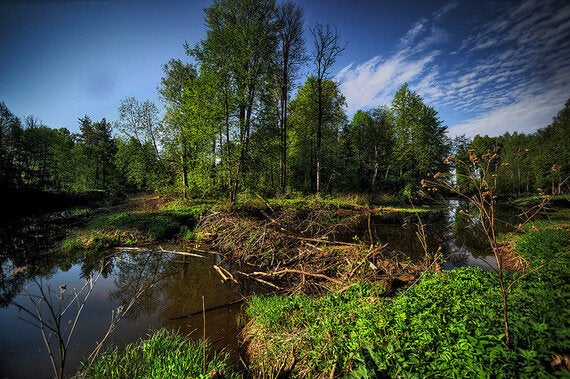
Image courtesy of Aleksey Gnilenkov
The beaver is an engineer keystone species, with a disproportionately large effect on the environment relative to its abundance. Indeed, because these dams block the flow of rivers, creating swamps or ponds, they dramatically change the surrounding environment, which is beneficial - or even necessary - for the survival of other species such as amphibians, fish, birds and even trees.
Beavers are known for their uncanny ability to fell trees overnight and build dams and lodges, used for protection from predators and food supply in winter. They first divert a river's flow in order to lessen the pressure during construction, and build dams out of logs, stones and mud, up to 1.5 metres wide and 1.8 metres high. These dams are extremely well designed, the shape changing depending on the speed of the water stream, including spillways to allow excess water to run off.
What you may not know: The longest beaver dam recorded reached an astonishing length of 850 metres!
That's not a hill, it's a termite mound!
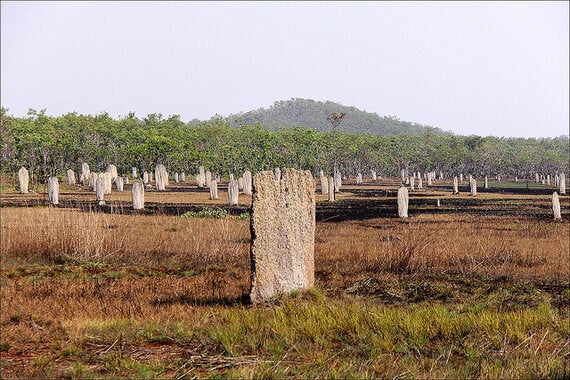
Image courtesy of Rupert Ganzer
Termites are not typically appreciated creatures, but the skill of their workers should still be recognised. Like most ants, termites create large nests with interlocking tunnels, complete with hatcheries, water reserves, and fungal gardens for food production.
Some termites' nests extend above the ground, creating mounds that can reach as high as 9 metres, though 2 to 3 meters is more common. The shapes of these mounds vary from species to species, but some are quite recongisable: compass termites create tall, wedge-shaped mounds, consistently oriented on the north-south axis, thought to help with the thermal regulation of the nest.
What you may not know: Underground nests can sometimes connect to each other via tunnels - these are called polycalic nests - and a destroyed or abandoned nest can be reinfested through the others.
An unwanted neighbour: paper wasps and their umbrella nests
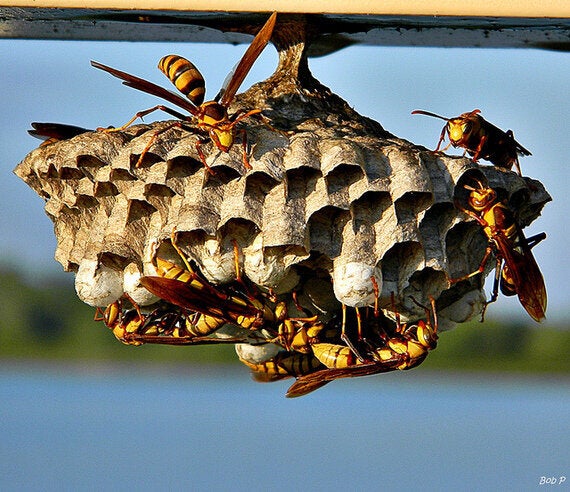
Image courtesy of Bob Peterson
Paper wasps owe their name to the material they create to make their nests out of, which strangely resembles paper or papyrus. By mixing fibres from dead wood and plants and mixing it with saliva, they create a papery material which they create water-resistant nests out of.
Nests are usually found in sheltered locations, such as caves or under tree branches (or, if you are unlucky, in the eaves of your house!). Interestingly, unlike other similar types of hives, paper wasps leave the combs where they lay their eggs open, without a protective outer shell. Nests are usually attached to the sheltering structure by a narrow stem, making the nest look like an upside-down umbrella and earning the wasps the nickname of "umbrella wasps".
What you may not know: Paper wasps also secrete an ant-repelling chemical which they use to protect the eggs in their hives.
Knit one, purl one... weaver birds and their intricately woven nests
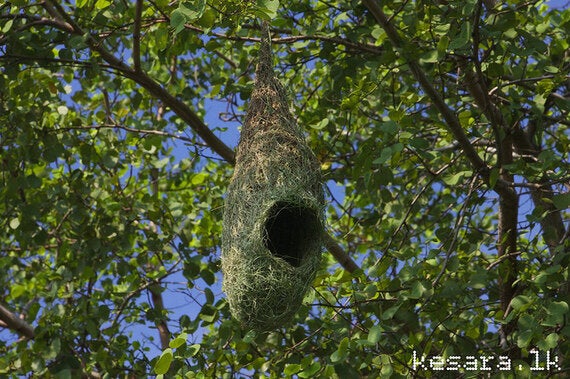
Image courtesy of Kesara Rathnayake
Weaver birds are small birds, related to finches, and native to Sub-Saharan Africa, with a few species found in tropical Asia. These are brightly coloured birds, usually measuring around 5cm in length. They owe their name to their nests, which are tightly woven chambers hanging from trees, often several to a tree or even branch.
Weaver birds being social animals, these nests usually contain over 100 distinct chambers, each resembling upside-down flasks, with openings at the bottom. Different species of weavers have different building techniques: some use palm tree leaves, some create entrances on the side rather than the bottom...
What you may not know: Some weaver birds even lay their eggs in other birds' nests for incubation!
So left turn here, and... lost again in the gopher tunnels!
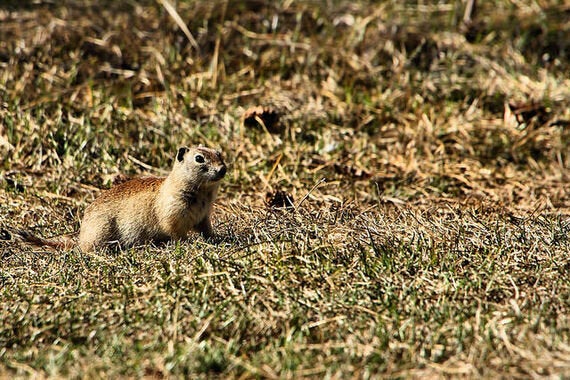
Image courtesy of Airworlfhound
Gophers - also called "pocket gophers" - are small North and Central American rodents, measuring about 1.5 to 2cm, with a small tail of about 0.5cm. They owe their name not to their pocket size but to the fur-lined pockets on their cheeks, extending from the side of their mouths to their back and shoulders.
They use these cheeks to transport food back to their larders, through the maze of tunnels they create, justifying their presence on this list. In general, gophers are loners and inhabit their own tunnel system - though they may share burrows if in close proximities to other gophers. These tunnel systems are very large and intricate, and it is often hard to locate gopher tunnels from the surface.
What you may now know: They can exert up to 18 000 pounds (over 8000kg!) of pressure with their bite.
Animals create more around us than often meets the eye... Spend some time walking in the jungle or forest and observe the wonders around you! Why not participate in wildlife conservation to get closer to these amazing animals in their natural habitats?
Check out 'Into the Wild' for more articles like this!
By Marion Thibaudeau
